预约演示
更新于:2025-06-28
Hydrocortisone Sodium Phosphate
磷酸氢化可的松钠
更新于:2025-06-28
概要
基本信息
非在研机构 |
权益机构- |
最高研发阶段批准上市 |
首次获批日期 美国 (1960-06-08), |
最高研发阶段(中国)- |
特殊审评- |
登录后查看时间轴
结构/序列
分子式C21H31Na2O8P |
InChIKeyKKFIZYONMZSRGA-OJJGEMKLSA-N |
CAS号6000-74-4 |
关联
6
项与 磷酸氢化可的松钠 相关的临床试验NCT06122987
An Open-label, Single-arm, Single-center Study Evaluating the Hemodynamic Response to Angiotensin-II When Used as the Second Vasopressor Agent for Septic Shock
Norepinephrine is a catecholamine that is the first-line vasopressor for septic shock. The addition of non-catecholamine vasopressors, including vasopressin and angiotensin-II may be used in adults with septic shock that have inadequate mean arterial pressure while on norepinephrine. Uncertainty exists regarding the timing of initiation of these agents and there is a lack of data comparing their safety and efficacy.
The current literature suggests that earlier initiation of angiotensin-II will have a more significant reduction on norepinephrine-equivalent dose compared to later initiation. In addition, approximately half of patients initiated on vasopressin do not have an early hemodynamic response 6 hours after initiation. The purpose of this study is to evaluate the efficacy of angiotensin-II when used as the second vasopressor agent for septic shock.
The current literature suggests that earlier initiation of angiotensin-II will have a more significant reduction on norepinephrine-equivalent dose compared to later initiation. In addition, approximately half of patients initiated on vasopressin do not have an early hemodynamic response 6 hours after initiation. The purpose of this study is to evaluate the efficacy of angiotensin-II when used as the second vasopressor agent for septic shock.
开始日期2023-12-04 |
申办/合作机构 |
NCT03401398
Stress Hydrocortisone In Pediatric Septic Shock
SHIPSS is a multi-institutional, prospective, controlled, randomized, double-blinded interventional trial that will examine the potential benefits and risks of adjunctive hydrocortisone prescribed for children with fluid and vasoactive-inotropic refractory septic shock.
It is hypothesized that adjunctive hydrocortisone will significantly reduce the incidence of new and progressive organ dysfunction (primary outcome) and proportion of children with poor outcomes, defined as death or severely impaired health-related quality of life (HRQL) (secondary outcome), as assessed at 28 days following study enrollment (randomization).
It is hypothesized that adjunctive hydrocortisone will significantly reduce the incidence of new and progressive organ dysfunction (primary outcome) and proportion of children with poor outcomes, defined as death or severely impaired health-related quality of life (HRQL) (secondary outcome), as assessed at 28 days following study enrollment (randomization).
开始日期2019-03-11 |
申办/合作机构 |
NCT03907865
Clinical Efficacy of Topical Hydrocortisone 0.335% (Softacort®) in Patients With Chronic Dry Eye Disease and Associated Ocular Surface Inflammation
Dry eye disease (DED) is a highly prevalent ocular condition and induces a significant burden to the affected patients. Regardless of the underlying etiology, DED is associated with increased inflammation of the entire ocular surface including the adnexa, conjunctiva and cornea. As such, there is evidence from in vitro, animal and clinical studies that this inflammatory response of the ocular surface plays a pathophysiological key role in the development of DED. The Dry Eye Workshop 2007 (DEWS) therefore suggests the use of anti-inflammatory drugs such as corticosteroids, cyclosporine or others when topical lubricants alone are not sufficient. Recently, Softacort® eye drops containing 0.335% hydrocortisone have gained marketing authorization for the treatment of ocular surface inflammation. This formulation offers several advantages that make them potentially interesting for the treatment of DED. First, the formulation is preservative-free, which is of special importance in patients with DED, since it has been shown that preservatives are detrimental for the ocular surface. Further, hydrocortisone has the advantage that in comparison to other glucocorticoid derivatives, it features poor solubility. This means that corneal penetration is low, which is a desired effect in the treatment of ocular surface inflammation. Because of the poor penetration through thecornea, elevation of intraocular pressure and cataract formation, which are common side effect of corticosteroid treatment, have not been observed with Softacort® to date, also favoring the use of this agent in DED. The aim of the present study is to investigate whether treatment with Softacort® improves ocular surface inflammation as well as clinical signs and symptoms associated with DED in patients who are already taking topical lubricants for at least three months.
开始日期2018-03-27 |
申办/合作机构 |
100 项与 磷酸氢化可的松钠 相关的临床结果
登录后查看更多信息
100 项与 磷酸氢化可的松钠 相关的转化医学
登录后查看更多信息
100 项与 磷酸氢化可的松钠 相关的专利(医药)
登录后查看更多信息
243
项与 磷酸氢化可的松钠 相关的文献(医药)2023-04-01·Graefe's Archive for Clinical and Experimental Ophthalmology
Short-term results of a pulsed therapy with hydrocortisone eye drops to treat moderate to severe dry eye in primary Sjögren syndrome patients
Article
作者: Gabbriellini, Giovanna ; Figus, Michele ; Sartini, Francesco ; Menchini, Martina
BACKGROUND:
We investigated the safety and efficacy of short-term treatment with topical low-dose hydrocortisone sodium phosphate 0.335% (PFH) in patients with moderate to severe primary Sjögren syndrome (SS)-related dry eye disease (DED).
METHODS:
A retrospective single-centre interventional study. All patients received PFH for 6 days with a pulsed posology: three times daily for 2 days, twice daily for 2 days, and once daily for 2 days. This scheme was repeated for 3 consecutive months and then alternated for 3 months. Data were collected at baseline, 3 months, and 6 months of follow-up.
RESULTS:
A total of 40 SS patients were enrolled. Conjunctival hyperaemia and corneal-conjunctival stain significantly improved (p < 0.001). Ocular Surface Disease Index score reduced significantly between baseline and 3 months and between baseline and 6 months (p < 0.001). The tear film osmolarity lowered significantly in each eye from baseline to 3 months and from baseline to 6 months (p = 0.002 and p = 0.037, respectively). Comparing results at 3 and 6 months, the Ocular Surface Disease Index score (p = 1.000), the frequency of lacrimal substitutes installation (p = 0.632), and tear film osmolarity (right eye p = 0.518, left eye p = 1.000) did not change significantly. Intraocular pressure did not change during the study period.
CONCLUSION:
PFH eye drops with a pulsed posology improve signs and symptoms, not affecting the intraocular pressure in SS-related DED. Therefore, this pulsed treatment is safe and efficacious.
2021-12-01·International journal of clinical practice4区 · 医学
Kinetics of hydrocortisone sodium phosphate penetration into the human aqueous humor after topical application
4区 · 医学
Article
作者: Ragna, Giulia ; Muzi, Alessio ; Pellegrino, Roberto Maria ; Lupidi, Marco ; Castellucci, Greta ; Alabed, Husam B. R. ; Cagini, Carlo
AIM OF THE STUDY:
Hydrocortisone is a soft steroid with low anti-inflammatory properties and a short duration of action, used to manage several ocular conditions. The clinical benefits and side effects associated with hydrocortisone are well documented, but its basic pharmacokinetic in the eye is yet to be fully elucidated. The purpose of this study is to investigate the anterior chamber penetration capabilities of hydrocortisone when used in different concentrations as eye drops treatment.
MATERIALS AND METHODS:
This is a double-blind, single-centre, randomised clinical trial performed at the Department of Medicine and Surgery of the University of Perugia (Italy) on consecutive patients who undergone phacoemulsification with intraocular lens implantation. Patients were randomly assigned on the morning of surgery to receive a single instillation of 0.33% (group A) or 0.001% (group B) hydrocortisone sodium phosphate solution. Group of patients C did not receive any treatment and was used to measure the hydrocortisone endogenous levels. Before surgery, one aliquot of aqueous humor for each patient was aspirated. The time of collection for each sample was recorded. Hydrocortisone concentrations were then stratified into six interval classes of 30 minutes each.
RESULTS:
The mean concentration of hydrocortisone was significantly higher in group A (25.2 ± 12.4 ng/mL) compared with group B (7.11 ± 1.51 ng/mL) and compared with the mean hydrocortisone endogenous levels (3.92 ± 1.18 ng/mL) (P < .0001). No statistically significant differences of hydrocortisone mean concentrations between group B and the mean endogenous levels were found.
CONCLUSIONS:
Considering the frequent need for prolonged topical steroid therapies and the possible consequent undesirable side effects, ophthalmologists should consider the lowest clinically effective dose of hydrocortisone useful to obtain the desired therapeutic effect and in an adequate time, to minimise the amount of steroids into the anterior chamber and to avoid side effects like intra-ocular pressure increase or cataract development.
2020-10-01·Botany Letters
Phytochemical profiling and screening of protective effects ofArtabotrys odoratissimuson H2O2induced oxidative stress in HEK-293 cells and erythrocytes
作者: Narayanappa, Prashanth ; Malleshappa Honnenahally, Kumaraswamy ; Jain Raviraj, Sandeep Kumar ; Pargi, Meghana
The present study focussed on the phytochem. profiling, anti-oxidative and cytoprotective effects of the stem bark ethanol extract (BEE) and fruit ethanol extract (FEE) on HEK-293 cells and erythrocytes.The preliminary group tests revealed the presence of alkaloids, phenols, flavonoids, lactones, glycosides, oils and fats.HR-LCMS anal. of bark ethanol extract revealed the presence of isocorydine, quercetrin, caffeic acid, juglone.In addition, GC-MS anal. of fruit ethanol extracts revealed the presence of furanone, pyrrole and long-chain methylated gamma-butyrolactone.BEE showed a total phenolic content of 573.30 ± 0.67 μg/mg and flavonoid content of 831.03 ± 1.61 μg/mg when compared to FEE which had total phenolic content and flavonoid content of 164.40 ± 0.24 μg/mg and 630.17 ± 2.79 μg/mg, resp.Both the extracts showed protective effects on H2O2 induced oxidative damage on DNA, HEK-293 cells and erythrocytes.BEE showed an IC50 value of 2.23 ± 0.16 μg/mL in ABTS assay, similar results were observed in HEK-293 cells where the cells pre-treated with BEE showed a maximum cell viability of 56% under oxidative stress and the percentage inhibition of erythrocyte hemolysis was observed to be 86.39 ± 0.67% at a concentration of 250 μg/mL.The study clearly illustrates that the plant extracts from A. odoratissiumus possess potential antioxidative prospects against induced oxidative damage.
100 项与 磷酸氢化可的松钠 相关的药物交易
登录后查看更多信息
研发状态
10 条最早获批的记录, 后查看更多信息
登录
| 适应症 | 国家/地区 | 公司 | 日期 |
|---|---|---|---|
| 休克 | 美国 | 1960-06-08 |
登录后查看更多信息
临床结果
临床结果
适应症
分期
评价
查看全部结果
| 研究 | 分期 | 人群特征 | 评价人数 | 分组 | 结果 | 评价 | 发布日期 |
|---|
No Data | |||||||
登录后查看更多信息
转化医学
使用我们的转化医学数据加速您的研究。
登录
或
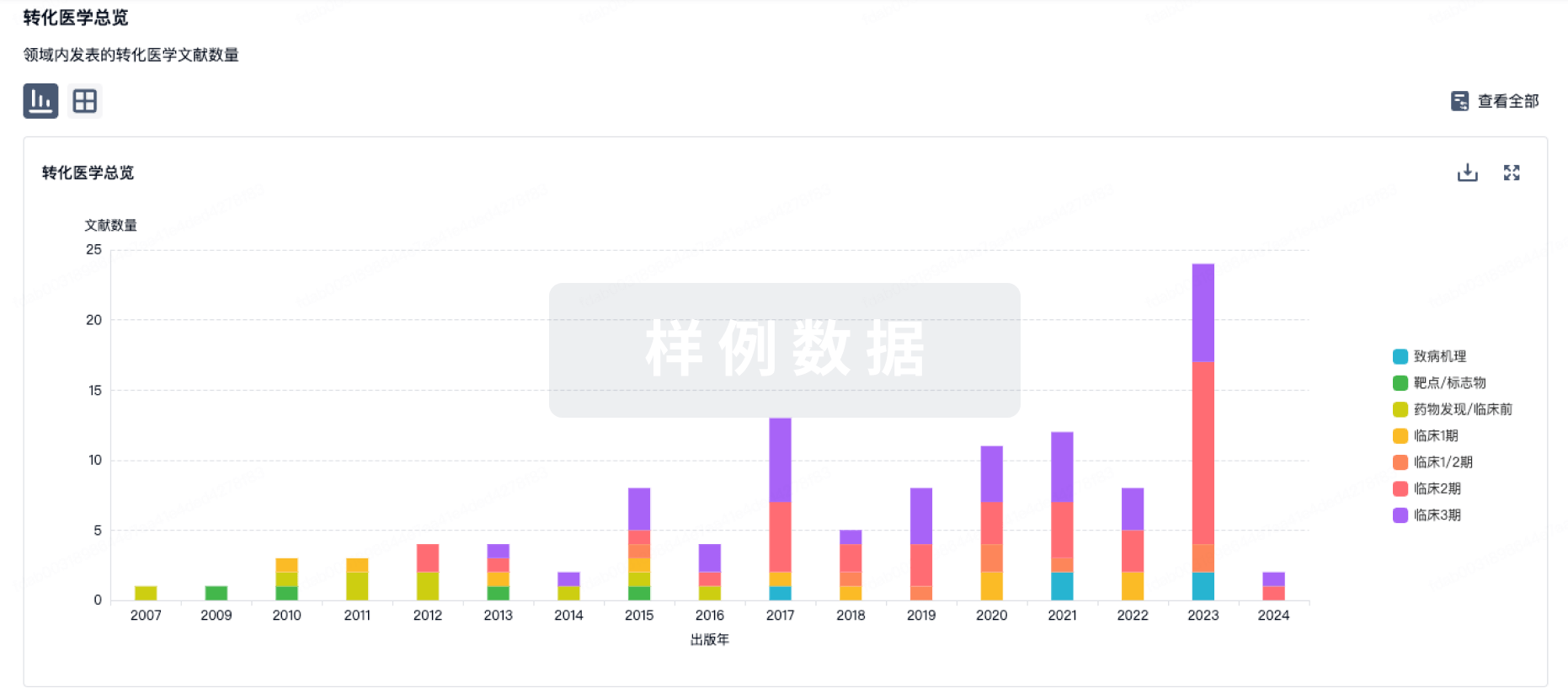
药物交易
使用我们的药物交易数据加速您的研究。
登录
或
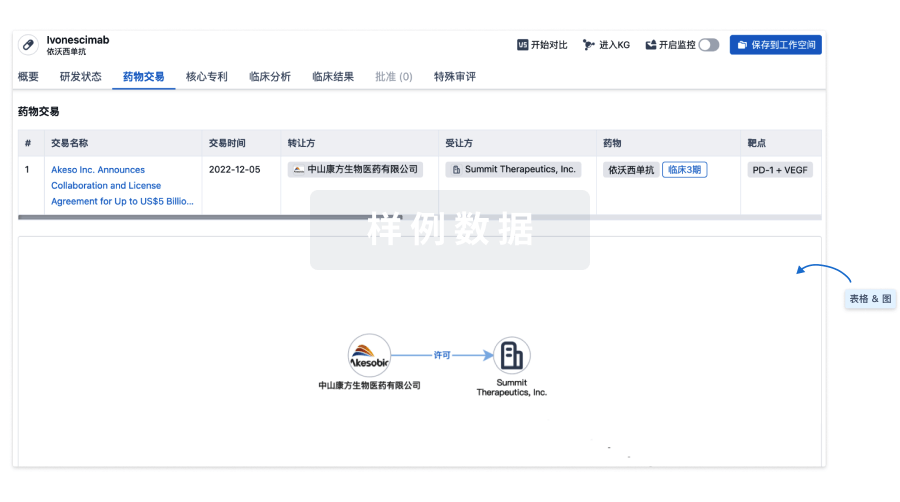
核心专利
使用我们的核心专利数据促进您的研究。
登录
或
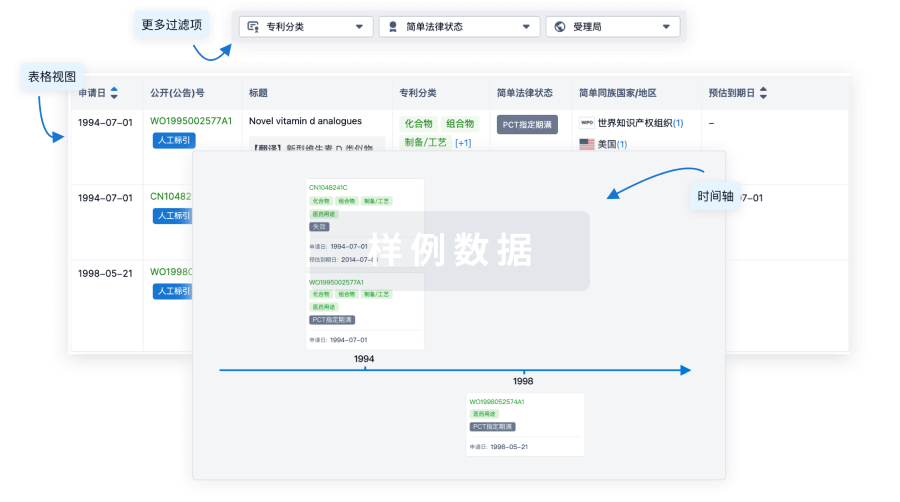
临床分析
紧跟全球注册中心的最新临床试验。
登录
或
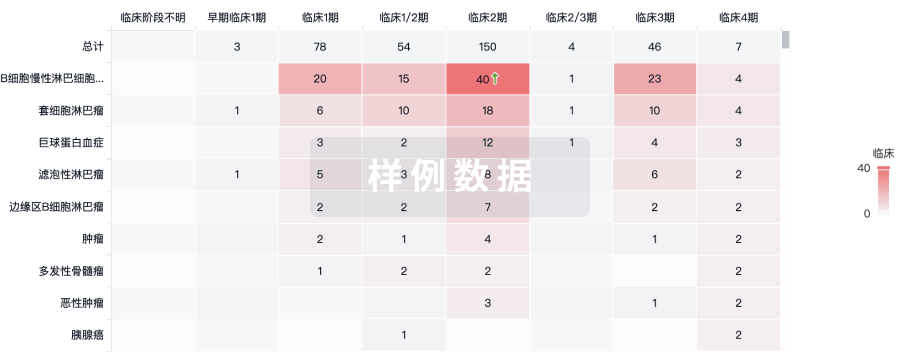
批准
利用最新的监管批准信息加速您的研究。
登录
或
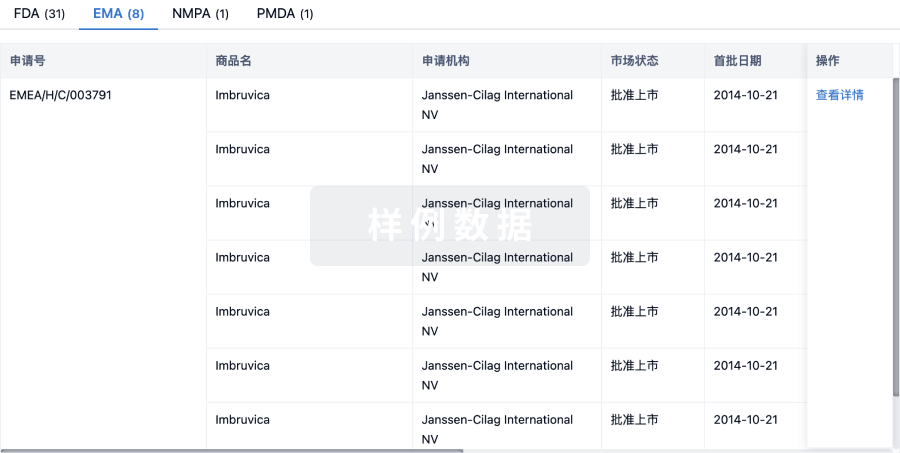
特殊审评
只需点击几下即可了解关键药物信息。
登录
或

Eureka LS:
全新生物医药AI Agent 覆盖科研全链路,让突破性发现快人一步
立即开始免费试用!
智慧芽新药情报库是智慧芽专为生命科学人士构建的基于AI的创新药情报平台,助您全方位提升您的研发与决策效率。
立即开始数据试用!
智慧芽新药库数据也通过智慧芽数据服务平台,以API或者数据包形式对外开放,助您更加充分利用智慧芽新药情报信息。
生物序列数据库
生物药研发创新
免费使用
化学结构数据库
小分子化药研发创新
免费使用




